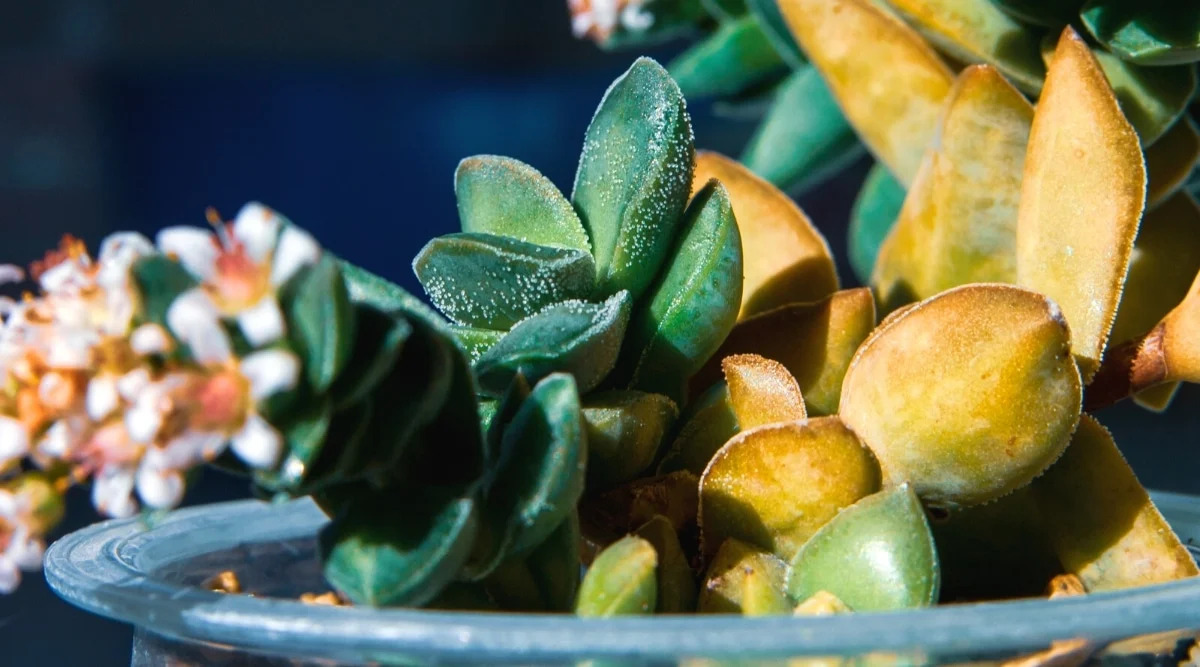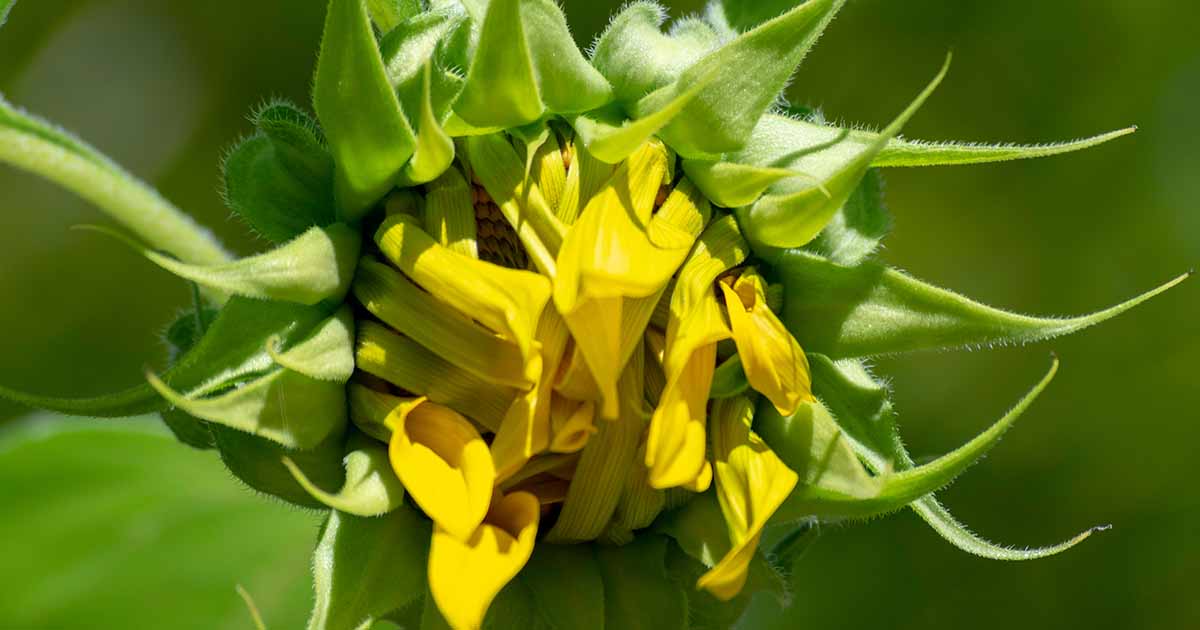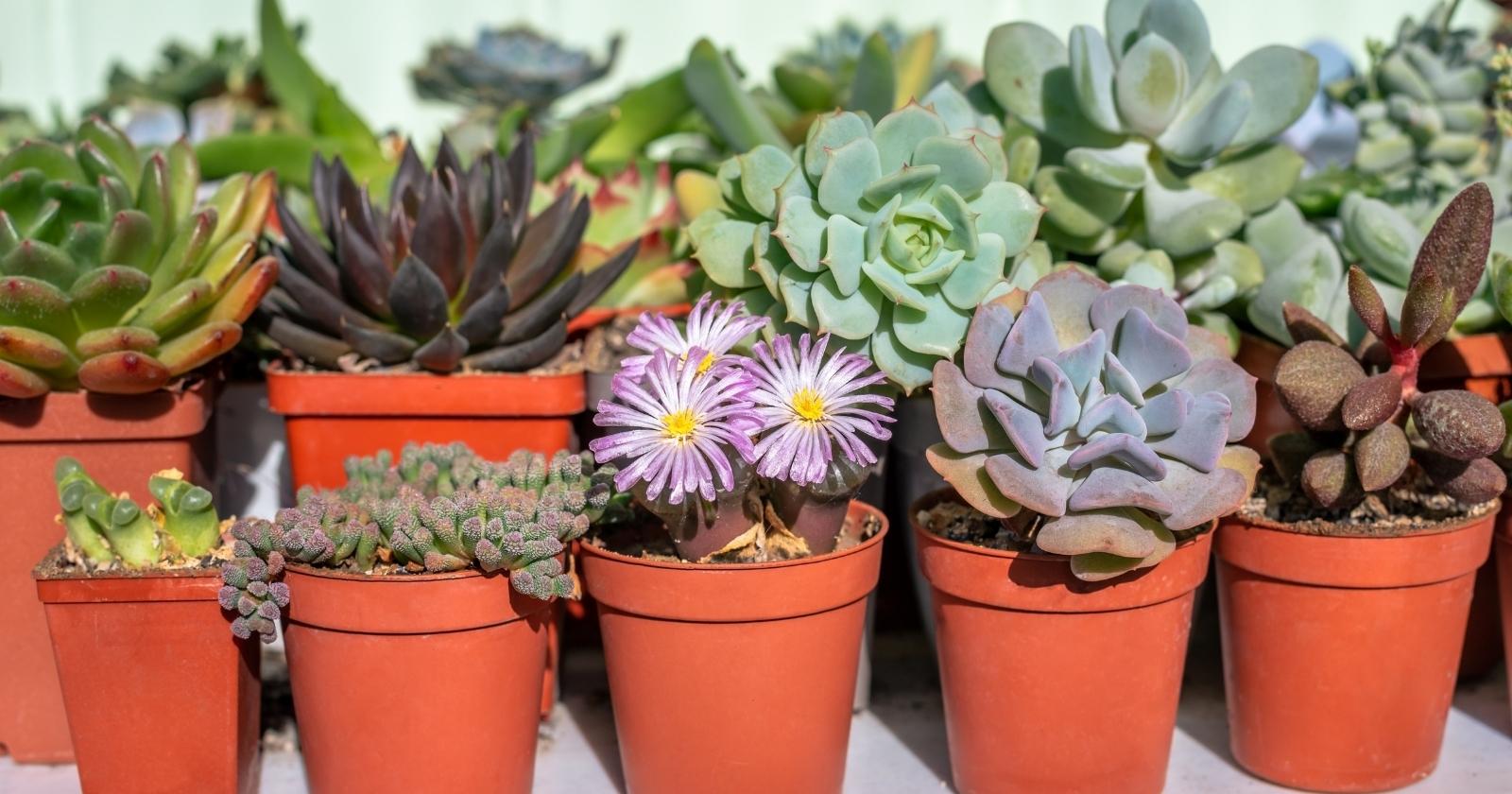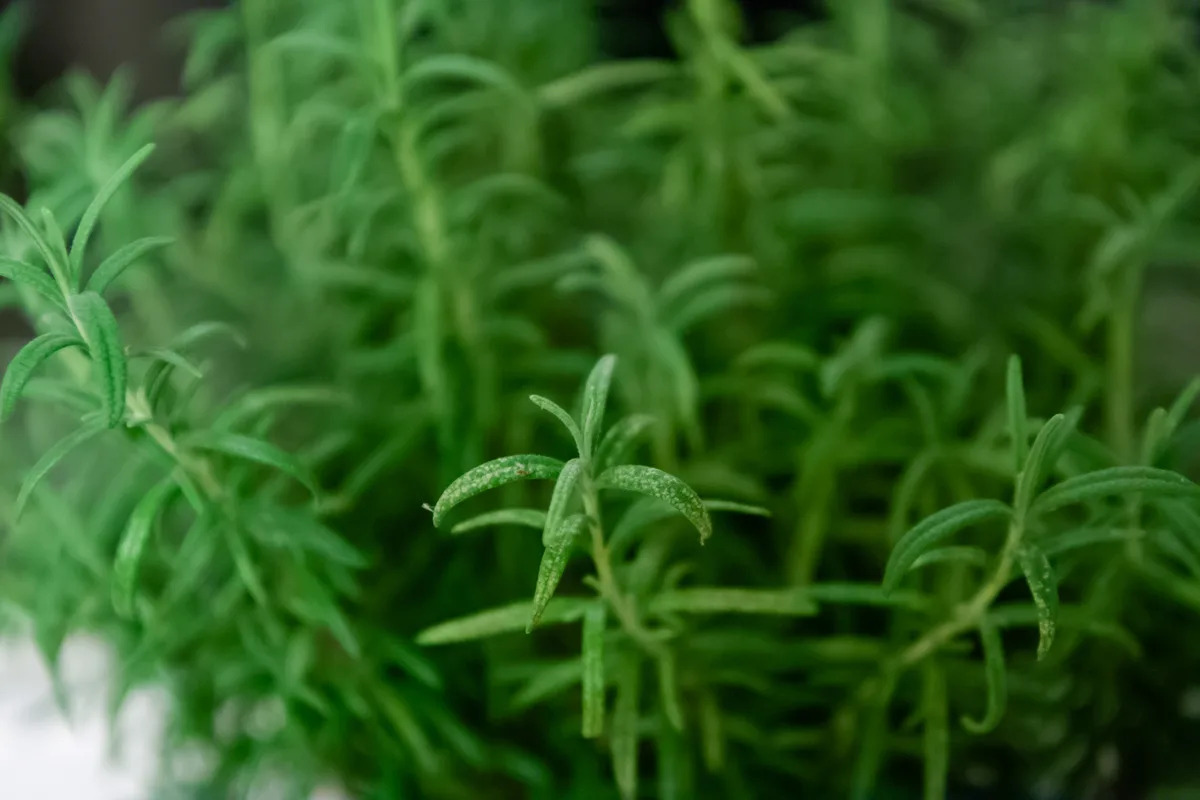Home>Types of Gardening>Ornamental Gardening>Why Are My Succulents Soft


Ornamental Gardening
Why Are My Succulents Soft
Modified: February 9, 2024
Discover the reasons why your succulents may be feeling soft. Explore helpful tips and advice for maintaining healthy succulents in your ornamental gardening endeavors.
(Many of the links in this article redirect to a specific reviewed product. Your purchase of these products through affiliate links helps to generate commission for Chicagolandgardening.com, at no extra cost. Learn more)
Table of Contents
- Introduction
- Understanding the Characteristics of Succulents
- Possible Reasons for Soft Succulents
- Overwatering as a Cause for Soft Succulents
- Insufficient Sunlight as a Cause for Soft Succulents
- Pests and Diseases that Cause Soft Succulents
- Lack of Proper Drainage as a Cause for Soft Succulents
- Nutrient Deficiency as a Cause for Soft Succulents
- Taking Care of Soft Succulents
- Conclusion
Introduction
Welcome to the world of succulents, where unique and fascinating plants thrive with their captivating beauty. Succulents have gained immense popularity among gardening enthusiasts due to their intriguing shapes, vibrant colors, and ability to survive in arid conditions. However, one common issue that succulent owners may encounter is soft or mushy leaves. If you’re facing this problem with your succulents, fret not! This article will explore the possible reasons behind soft succulents and provide insightful tips to help you bring them back to their optimal health.
Succulents, with their thick fleshy leaves and water-storing abilities, are adapted to survive in dry environments. These plants have unique characteristics that allow them to retain moisture efficiently. They come in a variety of forms, from iconic rosettes to trailing vines, making them perfect for both indoor and outdoor settings.
However, despite their resilience, succulents can still fall victim to various factors that may result in soft, mushy leaves. It’s essential to understand these factors to provide the appropriate care and ensure the long-term health of your succulents. Up next, we will take a closer look at the possible reasons behind soft succulents, including overwatering, insufficient sunlight, pests and diseases, lack of proper drainage, and nutrient deficiency.
Understanding the Characteristics of Succulents
Before diving into the reasons behind soft succulents, it’s important to understand the unique characteristics that make these plants so special. Succulents have evolved to store water in their leaves, stems, or roots to survive in harsh, arid environments. These water-storing tissues enable them to endure long periods without rainfall, making them ideal choices for low-maintenance gardening.
One of the defining features of succulents is their thick, fleshy leaves. These leaves contain specialized cells that can absorb and retain water, allowing the plants to withstand dry conditions. This adaptation also gives succulents their distinct appearance, with leaves ranging from plump and round to long and spiky.
In addition to their water-storing abilities, succulents also have a unique root structure. Rather than growing deep into the soil like most plants, succulent roots develop close to the surface. This shallow root system helps them quickly absorb rainfall, dew, or any available moisture. It also aids in the efficient uptake of nutrients, which is crucial for their growth and overall health.
Succulents are also known for their ability to propagate easily. Many succulent species can reproduce through methods such as leaf or stem cuttings, offset division, or even by producing tiny plantlets along their stems. This inherent ability to propagate makes succulents a popular choice for plant enthusiasts, as it allows them to expand their collection without purchasing new plants.
Understanding these unique characteristics of succulents will help you better grasp their needs and provide the right conditions for their growth. With this knowledge in mind, let’s explore the potential reasons for soft succulents and how to address them.
Possible Reasons for Soft Succulents
Soft or mushy leaves in succulents can be a cause for concern, as they indicate that something is amiss with the plant’s health. There are several possible reasons why your succulents may develop soft leaves, and it’s essential to identify the underlying issue to provide the appropriate care. Let’s explore some common factors that can lead to soft succulents:
- Overwatering: Succulents are adapted to survive in dry conditions and store water in their leaves. However, overwatering can lead to root rot and cause the leaves to become soft and mushy. It’s important to allow the soil to dry out between waterings to prevent waterlogged conditions.
- Insufficient Sunlight: Succulents thrive in bright, indirect sunlight. If they don’t receive enough light, they may stretch or elongate, resulting in weakened, soft leaves. Make sure to place your succulents in a location where they can receive at least six hours of sunlight per day.
- Pests and Diseases: Insect infestations or fungal and bacterial infections can also lead to soft succulents. Common pests that affect succulents include mealybugs, scale insects, and aphids. Regularly inspect your plants for any signs of pests or diseases and take appropriate measures to control them.
- Lack of Proper Drainage: Succulents thrive in well-draining soil. If the potting mix retains too much moisture, the roots can become waterlogged, leading to root rot and soft leaves. Ensure your succulents are planted in a well-draining potting mix and that the container has drainage holes.
- Nutrient Deficiency: Succulents require a balanced supply of nutrients to thrive. An imbalance in essential minerals, such as nitrogen, phosphorus, and potassium, can result in weakened plants and soft foliage. Use a specialized succulent fertilizer to provide the necessary nutrients, following the recommended dosage.
By identifying the potential reasons for soft succulents, you can take appropriate steps to address the issue and improve the health of your plants. In the following sections, we will delve deeper into each of these factors and provide practical tips on how to care for soft succulents.
Overwatering as a Cause for Soft Succulents
Overwatering is one of the most common reasons for soft succulents. While it’s important to provide adequate water to keep your plants hydrated, succulents have different moisture requirements compared to other houseplants. Overwatering can lead to root rot, which prevents the plants from absorbing nutrients and causes the leaves to become soft and mushy.
To prevent overwatering, it’s crucial to understand the watering needs of succulents. Rather than sticking to a strict watering schedule, it’s best to water your succulents only when their soil is dry. Stick your finger about an inch into the soil, and if it feels dry, it’s time to water. Avoid watering if the soil still feels moist or if the lower leaves of the succulent appear plump and healthy.
When watering your succulents, it’s important to ensure proper drainage. Use well-draining soil specifically formulated for succulents or add perlite or coarse sand to regular potting mix to improve drainage. Additionally, make sure your pots have drainage holes to allow excess water to escape.
When watering, water the base of the plant until it starts to flow out from the drainage holes. Allow any excess water to drain completely, and remove any standing water from the saucer or tray. Avoid misting or spraying water on the foliage, as this can lead to moisture retention on the leaves and increase the risk of fungal diseases.
If you notice signs of overwatering, such as soft, mushy leaves and a rotting smell, act promptly to save your succulent. Remove the plant from its pot and gently shake off excess soil. Inspect the roots for any signs of rot, such as dark and slimy roots. Trim off any affected roots using a clean, sharp tool. Allow the plant to dry out completely for a few days before repotting it in fresh, well-draining soil.
Remember, succulents are adapted to survive in arid conditions and can tolerate periods of drought. By adjusting your watering practices and providing proper drainage, you can prevent overwatering and help your succulents thrive with healthy, firm leaves.
Insufficient Sunlight as a Cause for Soft Succulents
Proper sunlight exposure is crucial for the health and well-being of succulents. Insufficient sunlight can lead to stretched, weak growth and result in soft leaves. Succulents evolved to thrive in bright, indirect sunlight, mimicking their natural habitat in arid regions.
When succulents don’t receive enough light, they will compensate by stretching or elongating towards the light source. This growth pattern, known as etiolation, can cause the leaves to become weak and soft. Without adequate sunlight, succulents also struggle to produce enough energy through photosynthesis, affecting their overall health.
To provide sufficient sunlight for your succulents, it’s important to place them in a location that receives at least six hours of bright, indirect sunlight each day. South or west-facing windows are typically the best spots to maximize sunlight exposure. If you’re growing succulents indoors and don’t have access to direct sunlight, consider using grow lights specifically designed for plants to supplement the light requirements.
When positioning your succulents, keep in mind that some species are more tolerant of shade than others. For example, succulents with thinner leaves, such as Echeveria and Sedum, are more sun-loving and require more direct sunlight. On the other hand, succulents with thicker, waxy leaves, like Haworthia and Sansevieria, can tolerate slightly lower light levels.
If you notice your succulents stretching or leaning towards one side, it’s an indication that they are not receiving enough light. Rotate your plants regularly to promote even growth and prevent them from bending towards the light source. This will ensure that all parts of the succulent receive adequate sunlight, allowing the leaves to develop firmness and retain their natural shape.
Remember, it’s important to strike a balance when it comes to sunlight exposure. While succulents need bright light, excessive direct sunlight during the hottest parts of the day can cause sunburn and damage the leaves. Monitor your plants for any signs of sunburn, such as brown or discolored patches. If necessary, provide some shade during intense sunlight hours to protect your succulents.
By providing the right amount of sunlight, you can encourage compact, sturdy growth in your succulents, resulting in healthy, firm leaves that are less prone to becoming soft.
Pests and Diseases that Cause Soft Succulents
Succulents are generally resilient, but they are not immune to pests and diseases. Insect infestations and fungal or bacterial infections can weaken the plants, leading to soft leaves and overall decline in health. It’s important to be aware of the common pests and diseases that can affect succulents and take appropriate measures to prevent and treat them.
Mealybugs are one of the most common pests that target succulents. These tiny, white, cottony insects feed on the plant sap, causing damage to the leaves and stems. Mealybugs can lead to soft and discolored foliage, as well as cause the plant to lose vigor. To control mealybug infestations, you can use a cotton swab dipped in rubbing alcohol to remove them manually. Alternatively, you can use insecticidal soap or neem oil, following the instructions on the product label.
Scale insects are another common pest that can affect succulents. These small, immobile pests attach themselves to the plant and suck sap, causing yellowing and softening of leaves. To control scale insects, you can gently scrape them off the plant using a toothbrush or cotton swab dipped in rubbing alcohol. If the infestation is severe, consider using an insecticidal soap or horticultural oil to eliminate them.
Aphids, tiny insects that come in different colors, can also infest succulents. They feed on the plant sap, causing distorted growth and weakened leaves. To control aphids, you can spray the plant with a strong stream of water to dislodge them. Alternatively, you can use insecticidal soap or neem oil to eliminate them.
Succulents are susceptible to fungal and bacterial infections, especially if the growing conditions are unfavorable. Root rot, caused by overwatering and poorly draining soil, can lead to soft and mushy leaves. To prevent and treat root rot, ensure that your succulents are planted in well-draining soil and that the pots have drainage holes. If root rot is already present, you may need to trim off the affected roots and replant the succulent in fresh soil.
Fungal diseases, such as powdery mildew and rot, can also affect succulents. Powdery mildew appears as a white powdery substance on the leaves, while rot manifests as black or brown spots on the leaves and stems. To prevent fungal diseases, provide adequate air circulation around the plants and avoid overhead watering. If your succulent becomes infected, remove the affected parts and apply a fungicide formulated for succulents.
Regularly inspect your succulents for any signs of pests or diseases, such as discoloration, wilting, or distorted growth. Early detection and prompt action can help prevent further damage and save your succulents from becoming soft and unhealthy.
Lack of Proper Drainage as a Cause for Soft Succulents
Proper drainage is crucial for the health and well-being of succulents. When the soil lacks proper drainage, excess water accumulates around the roots, leading to waterlogged conditions. This can result in root rot and cause the leaves to become soft and mushy.
Succulents are adapted to arid conditions and are accustomed to periods of dryness between waterings. They have evolved to store water in their leaves, stems, or roots, making them susceptible to overwatering if the soil retains moisture for prolonged periods.
To ensure proper drainage for your succulents, it’s important to choose well-draining soil specifically formulated for succulent plants. If you prefer making your own potting mix, you can modify regular potting soil by adding ingredients like perlite or coarse sand to increase porosity.
In addition to the right soil, using pots with drainage holes is crucial. These holes allow excess water to escape, preventing water from pooling around the roots. When planting succulents, make sure the containers have sufficient drainage holes at the bottom.
When watering your succulents, it’s important to water thoroughly but avoid allowing the pot to sit in standing water. After watering, allow any excess water to drain completely, and make sure to empty the saucer or tray to prevent water from being reabsorbed by the plant.
If you notice that your succulents have become soft, inspect the roots for signs of root rot. Healthy roots should be firm and white, while rotting roots may appear dark, mushy, or discolored. If root rot is detected, it’s important to take immediate action to save your succulent. Remove the plant from its pot, gently shake off excess soil, and trim any affected roots using clean and sharp tools. Allow the plant to dry out for a few days before repotting it in fresh, well-draining soil.
Remember, a lack of proper drainage can lead to waterlogged conditions, causing root rot and soft succulents. By ensuring your succulents are planted in well-draining soil and using pots with drainage holes, you can help prevent water-related issues and maintain the health and vitality of your plants.
Nutrient Deficiency as a Cause for Soft Succulents
Nutrient deficiency can result in weakened, soft succulents. While succulents are known for their ability to survive in nutrient-poor environments, they still require a balanced supply of essential minerals for optimal growth and health. An imbalance or lack of necessary nutrients can lead to the deterioration of leaves and overall decline in the plant’s vigor.
Nitrogen, phosphorus, and potassium (NPK) are the primary macronutrients that succulents require. Nitrogen is essential for foliage growth and the production of chlorophyll. A deficiency in nitrogen can cause stunted growth and pale, soft leaves. Phosphorus is crucial for root development and flowering. Insufficient phosphorus can result in weak root systems and limited flowering. Potassium is involved in overall plant health and disease resistance. A lack of potassium can lead to weakened plants and vulnerable foliage.
In addition to the primary macronutrients, succulents also benefit from other essential elements, such as calcium, magnesium, and trace minerals. Calcium helps with cell wall formation and prevents leaf tip burn, while magnesium is involved in chlorophyll production. Lack of these minerals can result in leaf abnormalities and soft foliage. Trace minerals, such as iron, zinc, and manganese, are required in small amounts for various metabolic processes. Deficiencies in these minerals can manifest as yellowing or discoloration of leaves.
To prevent nutrient deficiency in succulents, it’s important to provide a balanced fertilizer specifically formulated for succulent plants. Look for a slow-release fertilizer with an NPK ratio suitable for succulents, such as 2:1:2 or 3:1:2. Apply the fertilizer according to the package instructions, taking care not to exceed the recommended dosage, as excessive fertilization can lead to salt buildup and damage the roots.
It’s important to note that succulents have lower nutrient requirements compared to other plants. Overfertilization can be just as harmful as nutrient deficiency. Therefore, it’s important to find the right balance. If you’re unsure about the nutrient needs of your succulents, it’s best to err on the side of caution and provide a more diluted solution.
Regularly monitor your succulents for signs of nutrient deficiency. Look for pale or yellowing leaves, slow growth, or weakened stems. If you suspect a nutrient deficiency, you can apply a water-soluble fertilizer with micronutrients to provide a quick boost. However, it’s important to address the underlying cause of the deficiency and adjust the regular fertilizer regimen to prevent further issues.
By providing the necessary nutrients in the right balance, you can support the overall health and vigor of your succulents. This will help promote firm, resilient foliage and ensure that your succulents remain beautiful and thriving for years to come.
Taking Care of Soft Succulents
If you have noticed that your succulents have developed soft leaves, don’t worry! With proper care and attention, you can help your succulents recover and regain their firmness. Here are some essential care tips for soft succulents:
- Assess the watering routine: Evaluate your watering habits and make sure you are not overwatering your succulents. Allow the soil to dry out between waterings and ensure proper drainage to prevent root rot. Remember, succulents are adapted to arid conditions and prefer to be slightly underwatered than overwatered.
- Adjust the sunlight exposure: Ensure that your succulents are receiving enough bright, indirect sunlight. Place them in a location that receives at least six hours of sunlight per day. Rotate the plants regularly to promote even growth and prevent etiolation.
- Inspect for pests and diseases: Regularly inspect your succulents for signs of pests or diseases. Take immediate action if you notice any infestations or infections. Remove pests manually or use appropriate treatments like insecticidal soap or neem oil. For fungal or bacterial issues, trim affected parts and apply a suitable fungicide or bactericide.
- Ensure proper drainage: Check that your succulents are planted in well-draining soil and that the pots have drainage holes. If necessary, repot your succulents in fresh, well-draining soil to prevent waterlogged conditions and root rot. Avoid excessively compacted or heavy soil mixes.
- Provide appropriate nutrients: Feed your succulents with a balanced fertilizer formulated for succulents. Follow the instructions on the fertilizer package and avoid overfertilization, as it can damage the roots. Regularly monitor your succulents for signs of nutrient deficiency and adjust the fertilizer regimen accordingly.
- Patience and observation: It’s important to be patient with your succulents as they recover. Soft leaves may take some time to regain their firmness. Continuously observe your plants for any changes in their appearance or behavior, and make adjustments to their care as necessary.
Remember that each succulent species may have specific care requirements, so it’s important to do some research or consult a gardening expert if you are unsure about the needs of your particular succulent varieties.
Taking proper care of your soft succulents will help restore their health and beauty. By addressing the underlying issues, providing the right growing conditions, and maintaining a balanced care routine, you can enjoy vibrant and resilient succulents that will thrive for years to come.
Conclusion
Soft succulents can be a cause for concern, but with the right care and attention, you can help them regain their firmness and vitality. By understanding the characteristics of succulents and the factors that can contribute to soft leaves, such as overwatering, insufficient sunlight, pest and disease infestations, lack of proper drainage, and nutrient deficiency, you can address these issues effectively.
Proper care for soft succulents includes adjusting your watering routine to prevent overwatering and ensuring proper drainage to prevent root rot. Providing sufficient sunlight and adjusting the placement of your plants can promote healthy growth and firm leaves. Regularly inspecting for pests and diseases will allow you to take prompt action to control and treat any infestations or infections that may contribute to soft foliage.
Additionally, ensuring your succulents receive the necessary nutrients through balanced fertilization is crucial to their overall health and resilience. Monitoring for nutrient deficiencies and addressing them accordingly will help your succulents thrive and prevent soft leaves caused by nutrient imbalances.
Remember to be patient with your succulents as they recover. Observing their appearance and behavior, making adjustments to their care when needed, and providing consistent care will contribute to their long-term health and beauty.
With proper care and attention, your soft succulents can regain their firmness, vibrant colors, and unique beauty. Enjoy the journey of tending to these fascinating plants, and may your succulent collection continue to thrive and bring joy to your ornamental garden.




